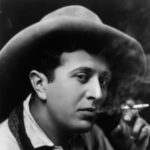This Biography is about one of the best Physicist Edward Mills Purcell including his Height, weight, Age & Other Detail…
| Biography Of Edward Mills Purcell | |
| Real Name | Edward Mills Purcell |
| Profession | Physicists |
| Nick Name | E. M. Purcell |
| Famous as | Physicist |
| Nationality | American |
| Personal life of Edward Mills Purcell | |
| Born on | 30 August 1912 |
| Birthday | 30th August |
| Died At Age | 84 |
| Sun Sign | Virgo |
| Born in | Taylorville, Illinois, USA |
| Died on | 07 March 1997 |
| Place of death | Cambridge |
| Spouse/Partner | Beth C. Busser |
| Family Background of Edward Mills Purcell | |
| Children | Dennis, Frank |
| Education | Harvard University, Purdue University |
| Discoveries / Inventions | Nuclear Magnetic Resonance (NMR) Smith-Purcell Effect 21 Cm Line |
| Awards | Nobel Prize for Physics (1952) Oersted Medal (1967) National Medal of Science (1979)
Max Delbruck Prize (1984) Beatrice M. Tinsley Prize (1988) |
| Personal Fact of Edward Mills Purcell | |
|
Edward Mills Purcell was a well-known American physicist. He shared the Nobel Prize for Physics in 1952 with Felix Bloch, a Swiss physicist working mainly in the United States. They were awarded the Nobel Prize for “their development of new ways and methods for nuclear magnetic precision measurements.” Purcell is known in the science community for his independent discovery of nuclear magnetic resonance. Nuclear magnetic resonance (NMR) helps scientists determine the chemical structure and properties of materials with precision. NMR is also the basis of modern day magnetic resonance imaging (MRI) used as a non-invasive diagnostic tool to produce detailed images of organs and structures within the body. Purcell not only made significant contribution to physics but contributed to astronomy as well. He is also remembered by biologists for his famous lecture Life at Low Reynolds Number in which he explained a principle called the Scallop theorem. He was the first to question the CP symmetry of particle physics. Purcell received many awards during his lifetime for his scientific, educational, and civic work. He served as a science advisor to the U. S. Presidents Dwight D. Eisenhower, John F. Kennedy, and Lyndon B. Johnson. |
|




